Shopify is a popular eCommerce platform that allows businesses to easily set up an online store and sell products. One important metric for evaluating the success of an online store is the Shopify conversion rate, which is the percentage of visitors who make a purchase. Understanding and optimizing the Shopify conversion rate is crucial for any business looking to maximize its online sales and achieve sustainable growth.
In this comprehensive guide, we will explore what the Shopify conversion rate is, why it is important, and how to improve it. We’ll delve into key concepts such as the average conversion rate for Shopify stores, the average Shopify conversion rate, and the benchmarks you should aim for. Whether you are wondering what a good conversion rate for Shopify is or seeking strategies to boost your Shopify store conversion rate, this article will provide valuable insights and actionable tips.
We’ll cover various aspects of the Shopify conversion rate, including the average conversion rate for Shopify stores and what is considered a good conversion rate on Shopify. You’ll learn about the factors that influence the Shopify average conversion rate and how to measure and track your store’s performance. Additionally, we will discuss the significance of understanding what is conversion rate in Shopify and how to leverage this knowledge to enhance your store’s effectiveness.
Throughout this guide, we will provide benchmarks and examples to help you gauge your store’s performance against industry standards. Whether you’re aiming to understand the average Shopify store conversion rate or improve your own Shopify conversion rates, this article will serve as a comprehensive resource for all things related to Shopify conversion rate optimization.
Table of Contents
- What is Shopify Conversion Rate?
- What is a Good Conversion Rate on Shopify?
- Why is Shopify conversion rate so important for Shopify stores?
- Overview of key statistics regarding Shopify conversion rate
- How To Calculate Shopify Conversion Rate?
- What affects Shopify conversion rates?
- How to improve Shopify conversion rate?
- How to Keep Track of Shopify Conversion Rate
- Conclusion
What is Shopify Conversion Rate?
Shopify conversion rate refers to the percentage of visitors to a Shopify store who complete a desired action, such as making a purchase or signing up for a newsletter. The conversion rate is a key metric for measuring the success of an eCommerce store and is calculated by dividing the number of conversions by the number of visitors to the site and then multiplying by 100.
For example, if a Shopify store had 100 visitors in a given time period and 3 of those visitors made a purchase, the conversion rate would be 3% (3 divided by 100, multiplied by 100). A high conversion rate indicates that the store is effectively converting visitors into customers, while a low conversion rate may indicate a need for improvement in the store’s design, product offerings, or marketing strategies.
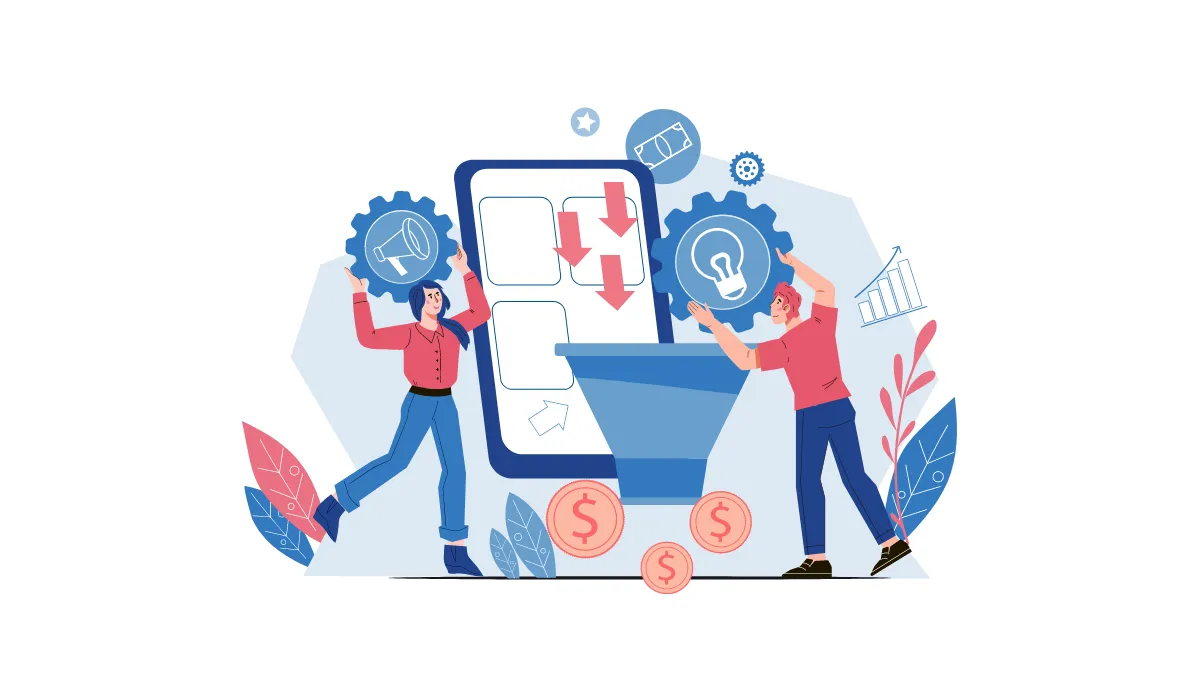
The importance of the Shopify conversion rate cannot be overstated. It directly impacts your store’s revenue and overall success. A high Shopify conversion rate indicates that your store effectively converts traffic into sales, reflecting positively on your product offerings, website design, and marketing strategies. Conversely, a low Shopify conversion rate may signal issues that need addressing, such as website usability, product appeal, or marketing efficiency.
What is a Good Conversion Rate on Shopify?
Determining what constitutes a good conversion rate on Shopify depends on various factors, including the industry, target audience, and specific goals of the store. Generally, a good Shopify conversion rate ranges from 2% to 4%, but this can vary widely. The average conversion rate for Shopify stores can provide a useful benchmark. According to industry data, the average Shopify store conversion rate hovers around 1.5% to 2.5%. However, top-performing stores often achieve conversion rates of 3.5% or higher, demonstrating that there is always room for improvement.
The Shopify conversion rate is influenced by numerous elements such as product type, price point, and the effectiveness of marketing strategies. For instance, niche markets with highly specialized products may see higher conversion rates due to the specific interests of their audience. Conversely, stores with broader product ranges may experience lower conversion rates as they cater to a more diverse audience. Understanding where your store falls within this spectrum can help you set realistic and achievable goals for your Shopify store conversion rate.
To assess whether your Shopify conversion rate is good, it’s essential to compare it with industry benchmarks and analyze your store’s performance over time. Tools like Google Analytics and Shopify’s built-in analytics can provide insights into your online store conversion rate Shopify metrics. By examining factors such as traffic sources, user behavior, and sales funnel efficiency, you can identify areas for improvement. Regularly tracking these metrics allows you to see how changes in your marketing strategies, website design, and product offerings impact your conversion rate Shopify store performance.
Ultimately, a good Shopify conversion rate is one that reflects continuous improvement and aligns with your business goals. Striving for incremental gains, such as increasing your conversion rate by a few percentage points, can lead to significant revenue growth over time. Focusing on optimizing various aspects of your store – such as product descriptions, checkout processes, and customer service – can contribute to a higher Shopify online store conversion rate. By setting realistic targets based on the average conversion rate for Shopify stores and consistently working to exceed them, you can achieve a strong, competitive conversion rate that drives long-term success.
Why is Shopify conversion rate so important for Shopify stores?
Shopify conversion rate is important for Shopify stores because it provides insight into how well the store is performing and helps store owners make informed decisions to drive sales and increase revenue. Here are some reasons why the Shopify store conversion rate is so important.
Measures the effectiveness of marketing and advertising efforts
The Shopify conversion rate is a vital metric that helps store owners evaluate the effectiveness of their marketing and advertising efforts. By closely monitoring conversion rates, store owners can gain valuable insights into how well their campaigns are performing and identify areas that need improvement. This data-driven approach allows for more informed decision-making and the ability to fine-tune marketing strategies to maximize results.
- Tracking Marketing and Advertising Performance: Tracking the Shopify conversion rate enables store owners to see the direct impact of their marketing and advertising efforts. For example, if a new advertising campaign leads to a significant increase in the Shopify conversion rate, it indicates that the campaign effectively attracted and converted visitors into customers. Conversely, if there is no change or a decrease in the conversion rate, it may suggest that the campaign needs adjustment or that different strategies should be explored.
- Understanding Customer Desires and Preferences: Monitoring the Shopify conversion rate also provides store owners with a deeper understanding of their customers’ desires and preferences. By analyzing the data, store owners can identify which products are most popular, which pages lead to higher conversions, and what types of content resonate most with their audience. This information is crucial for creating a shopping experience that meets customers’ needs and expectations.
- Optimizing the Online Store: Properly optimizing your online store using insights from the Shopify conversion rate can lead to higher customer satisfaction and increased sales. For instance, if the data shows that a particular product page has a high conversion rate, you can analyze the elements that contribute to its success and apply similar strategies to other pages. Similarly, if certain marketing channels show higher conversion rates, you can allocate more resources to those channels to drive better results.
- Enhancing Customer Satisfaction: By focusing on the Shopify conversion rate, store owners can ensure they are offering the best possible experience for their shoppers. This involves continuously testing and refining various aspects of the online store, such as website design, product descriptions, and checkout processes. A high Shopify conversion rate often correlates with a positive customer experience, as it indicates that visitors are finding what they need and completing their purchases seamlessly.
- Increasing Sales: Ultimately, the goal of optimizing the Shopify conversion rate is to increase sales. By making data-driven adjustments to marketing and advertising efforts, and by enhancing the overall shopping experience, store owners can convert more visitors into paying customers. This not only boosts revenue but also contributes to long-term business growth and success.
In summary, the Shopify conversion rate is an essential metric for measuring the effectiveness of marketing and advertising efforts. By tracking and analyzing conversion rates, store owners can gain valuable insights into customer behavior, optimize their online store, and enhance customer satisfaction, leading to increased sales and sustainable business growth.
Identifies areas for improvement
A low Shopify conversion rate can serve as a critical indicator that certain aspects of your store may require improvements. This metric can reveal whether there are underlying issues with your website design, product selection, or checkout process that are hindering visitors from completing their purchases. By keeping a close eye on the Shopify conversion rate, store owners can pinpoint specific areas that need enhancement to boost sales and increase profitability.
The Shopify conversion rate acts as a diagnostic tool, highlighting where the shopping experience may be falling short. For instance, if the conversion rate is low, it might suggest that the website design is not user-friendly or visually appealing, causing potential customers to leave without making a purchase. A cluttered or confusing layout can deter visitors, so optimizing the design for ease of navigation and aesthetic appeal can lead to a higher Shopify conversion rate.
Similarly, the product selection available in your store plays a significant role in influencing the Shopify conversion rate. If visitors are not finding products that meet their needs or if the product descriptions and images are not compelling, they are less likely to convert. Ensuring a diverse and attractive product range, along with detailed and enticing product information, can enhance the Shopify conversion rate.
The checkout process is another crucial factor impacting the Shopify conversion rate. A complicated or lengthy checkout process can frustrate customers, leading to abandoned carts and a lower conversion rate. Streamlining the checkout process by minimizing the number of steps, offering multiple payment options, and ensuring a secure transaction can significantly improve the Shopify conversion rate.
By monitoring the Shopify conversion rate closely, store owners can identify these problem areas and implement targeted improvements. Regularly analyzing this metric provides actionable insights into where changes are needed and allows for continuous optimization of the online store. This proactive approach ensures that the store remains competitive and meets the evolving needs of its customers.

In summary, a low Shopify conversion rate is a valuable signal that your store might need improvements in areas such as website design, product selection, or checkout process. By focusing on enhancing these elements based on insights from the Shopify conversion rate, store owners can boost sales, increase customer satisfaction, and ultimately drive long-term business growth.
Increases revenue
Increasing the Shopify conversion rate can be the key to unlocking greater profits and long-term success for any eCommerce store. A higher conversion rate directly translates to more sales from the same amount of traffic, significantly boosting revenue without necessarily increasing marketing spend. By using Shopify’s conversion rate tools, merchants can gain invaluable insights into their store’s performance and identify specific areas for optimization.
Shopify conversion rate tools provide detailed analytics that help merchants understand visitor behavior and pinpoint factors that may be hindering conversions. For example, these tools can highlight which product pages have the highest drop-off rates or where customers are abandoning their carts. Armed with this information, store owners can make data-driven decisions to improve their site’s layout, enhance product descriptions, streamline the checkout process, and implement targeted marketing strategies.
By systematically optimizing their site based on insights derived from the Shopify conversion rate, merchants can create a more efficient and user-friendly shopping experience. This optimization process might involve A/B testing different versions of product pages to see which one performs better, improving the speed and responsiveness of the website, or personalizing the shopping experience based on customer preferences. Each of these improvements can contribute to a higher Shopify conversion rate, leading to more completed purchases.
A higher Shopify conversion rate not only increases immediate sales but also enhances the overall profitability of the store. When more visitors convert into paying customers, the return on investment (ROI) for marketing efforts improves, as the same budget yields more sales. This increased efficiency allows businesses to reinvest in growth initiatives, such as expanding product lines, enhancing customer service, or scaling marketing campaigns, further driving revenue.
Additionally, a higher Shopify conversion rate can lead to improved customer satisfaction and loyalty. When customers find the shopping process easy and enjoyable, they are more likely to return for future purchases and recommend the store to others. This positive feedback loop can create a steady stream of repeat business and word-of-mouth referrals, contributing to sustained revenue growth over time.
Increasing the Shopify conversion rate is crucial for maximizing sales and revenue in an eCommerce store. By leveraging Shopify’s conversion rate tools and implementing data-driven optimizations, merchants can create an efficient, customer-centric shopping experience that drives growing returns. This focus on conversion rate optimization ensures that businesses are well-positioned for long-term success and profitability.
Provides valuable data for decision-making
Shopify’s conversion rate data is an invaluable tool that provides insightful information, helping store owners make well-informed decisions on their products, prices, and marketing tactics. By closely monitoring and analyzing the Shopify conversion rate, merchants can gain a deep understanding of their customers’ behaviors and preferences, which is essential for driving business success in today’s competitive market.
The Shopify conversion rate offers a wealth of data that can inform product decisions. By examining which products have the highest conversion rates, store owners can identify their best-sellers and understand what aspects of these products appeal most to customers. This insight allows them to focus on stocking and promoting high-converting items, ensuring that their inventory aligns with customer demand. Additionally, products with lower conversion rates can be scrutinized to determine if they require better descriptions, improved images, or promotional efforts to boost their appeal.
Pricing strategy is another critical area where Shopify conversion rate data proves invaluable. By analyzing conversion rates in relation to product prices, merchants can identify the optimal price points that maximize sales while maintaining profitability. For example, if a significant increase in the conversion rate is observed after a price reduction, it may indicate that the new price better matches customer expectations and purchasing power. Conversely, if higher-priced items are converting well, it might suggest that customers perceive them as offering good value for money. This data-driven approach to pricing ensures that store owners can make adjustments that align with their business goals and market conditions.
Marketing tactics can also be refined using insights from the Shopify conversion rate. By tracking how different marketing campaigns and channels impact conversion rates, merchants can determine which strategies are most effective at driving sales. For instance, if a particular email marketing campaign results in a notable increase in the Shopify conversion rate, it indicates that the messaging and offers resonate well with the target audience. Conversely, if certain campaigns do not yield the desired conversion rates, store owners can reevaluate and adjust their approach. This continuous feedback loop allows for the optimization of marketing efforts, ensuring that resources are allocated to the most impactful activities.
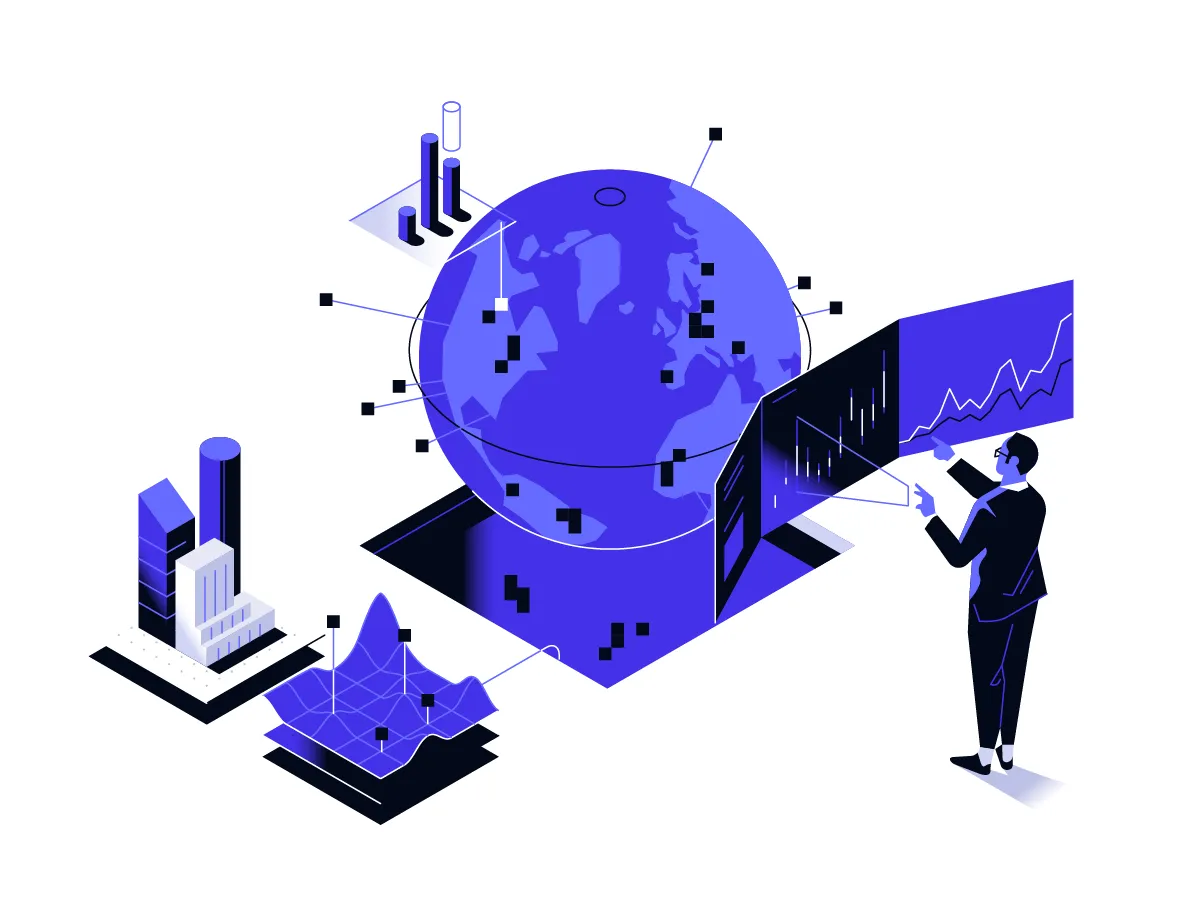
Overall, the Shopify conversion rate is a revolutionary feature that gives store owners an edge in today’s competitive market. By leveraging this data, businesses can make informed decisions that enhance their product offerings, pricing strategies, and marketing tactics, leading to increased sales and long-term success. In a landscape where consumer preferences and market dynamics are constantly evolving, the ability to adapt and optimize based on reliable data is crucial. Shopify’s conversion rate insights empower merchants to stay ahead of the curve, delivering a superior shopping experience that meets customer needs and drives business growth.
Helps track the success of optimization efforts
Monitoring the Shopify conversion rate over time is essential for tracking the success of optimization efforts within an eCommerce store. By consistently observing changes in the Shopify conversion rate, store owners can assess the impact of various enhancements and make necessary modifications to further boost performance. This ongoing analysis helps in identifying which improvements have been most successful and highlights areas that still need attention.
When store owners implement changes to their website, product listings, or marketing strategies, the Shopify conversion rate serves as a key metric for measuring the effectiveness of these optimizations. For example, if a new website design is introduced, tracking the Shopify conversion rate before and after the redesign can reveal whether the changes have positively impacted the user experience and increased the number of completed purchases. A noticeable uptick in the conversion rate would indicate that the new design is more effective in converting visitors into customers.
Similarly, when adjustments are made to product descriptions, images, or prices, the Shopify conversion rate provides immediate feedback on the success of these changes. By comparing conversion rates over different periods, store owners can determine if the optimizations are leading to higher sales. For instance, enhancing product descriptions with more detailed information and high-quality images may result in a higher Shopify conversion rate, suggesting that customers are finding the information more compelling and trustworthy.
Marketing efforts can also be evaluated through the lens of the Shopify conversion rate. When new campaigns or promotional strategies are launched, tracking the conversion rate helps in understanding their effectiveness. If a particular marketing campaign leads to a significant increase in the Shopify conversion rate, it indicates that the campaign resonated well with the target audience and successfully drove sales. Conversely, if there is no noticeable change or a decline in the conversion rate, it may suggest that the campaign needs to be reworked or targeted differently.
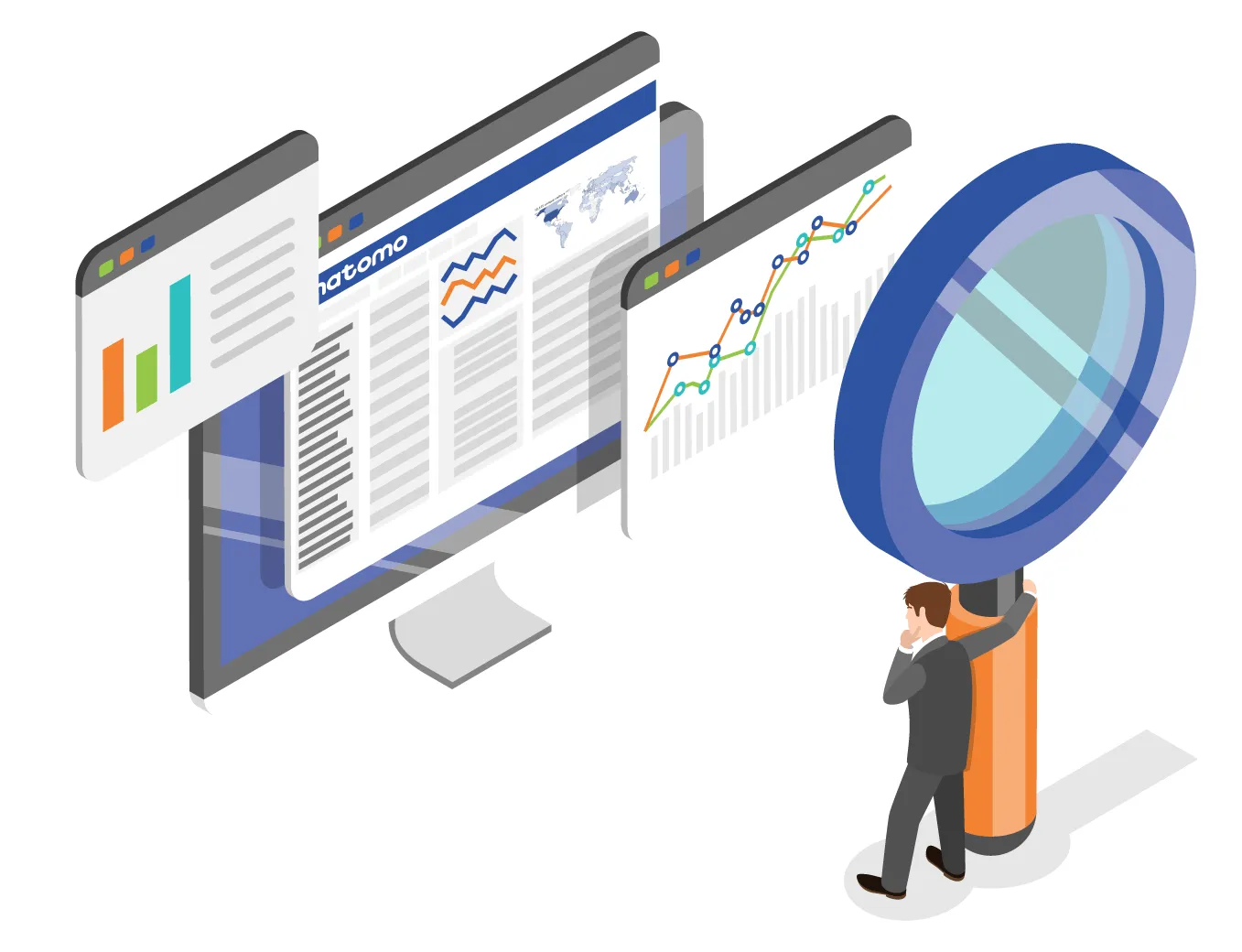
The continuous monitoring of the Shopify conversion rate allows store owners to adopt a dynamic and responsive approach to optimization. By regularly analyzing conversion data, they can identify trends and patterns that inform future decisions. This iterative process ensures that the store remains aligned with customer preferences and market demands, enabling ongoing improvements and sustained growth.
Overview of key statistics regarding Shopify conversion rate
Here are some statistics regarding the conversion rate Shopify store. By understanding these statistics, Shopify store owners can make informed decisions to improve their store’s performance and increase revenue. By regularly tracking conversion rate and analyzing it over time, merchants can identify areas.
- Average Shopify store conversion rate: The average conversion rate for Shopify stores was 1.3%. Shopify conversion rates can vary greatly depending on the store’s industry. For example, fashion stores typically have higher conversion rates than electronics stores. It also fluctuates throughout the year, with spikes in conversions during peak shopping periods such as holidays and special promotions. A Shopify store that has a conversion rate of over 3.7% is considered to be among the top 20% of Shopify stores. On the other hand, a store with a conversion rate exceeding 5.2% is ranked among the top 10%.
- Best-performing industries: Some of the best-performing industries for Shopify stores include fashion and apparel, health and wellness, and home and furniture. Shopify stores in these industries typically have higher conversion rates when compared to other industries.
- Factors affecting conversion rate: There are several elements that can affect the conversion rate of a Shopify store. Everything from web design, products offered and their prices to marketing plans should be taken into account by owners in order to ensure they make full use of available resources for maximum Shopify conversions.
- Mobile optimization: As the number of mobile shoppers continues to climb, Shopify store owners must prioritize optimizing their website for these devices. Studies have demonstrated that having a mobile-friendly site can significantly increase conversion rates and revenues. So, if you want your Shopify store to succeed in today’s digital age then ensuring it is optimized for a range of devices should be a priority.
- Cart abandonment rate: Did you know that the average eCommerce cart abandonment rate is somewhere between 60%-80%? This means around 7 in 10 customers who add items to their shopping carts don’t complete their purchase. To mend this issue and boost your Shopify conversion rate, Store owners should concentrate on fighting cart abandonment. Offering free shipping options, incentives/discounts, and streamlining the checkout process can help reduce suppression of sales due to cart abandonments as well as improve Shopify’s overall conversion rates.
- Customer reviews: Customer reviews are a powerful tool that can increase your store’s conversion rate and sales. Studies show that stores with customer reviews have significantly higher conversion rates than those without, so Shopify store owners should actively encourage customers to leave comments on their products. This will attract more buyers and help boost the overall conversion rate of your business.
- Email marketing: Email marketing is an invaluable asset to any eCommerce store, with data demonstrating that companies who invest in email campaigns have a standard conversion rate of just above 3%. To take advantage of this opportunity and increase your Shopify conversion rate, create a tailored email strategy for your business and consistently reach out to customers through emails.
These statistics provide a general understanding of the factors that can impact Shopify’s conversion rate and the role that conversion rate plays in the success of an eCommerce store. It’s important to remember that every store is unique, and the conversion rate will vary depending on a number of factors.
How To Calculate Shopify Conversion Rate?
To calculate the conversion rate for a Shopify store, use the following formula:

Where:
- The number of Orders is the total number of orders made in your store during a certain time period.
- The number of Unique Visitors is the number of unique individuals who visited your store during the same time period.
For example, if your store had 1,000 unique visitors and 30 orders in a week, the conversion rate would be calculated as follows:
Conversion Rate = (30/1,000) * 100 = 3%
It’s important to track and calculate the conversion rate on a regular basis, as it provides valuable insight into the performance of your store and helps you identify areas for improvement. By continually tracking and analyzing your conversion rate, you can make informed decisions that drive sales and increase revenue.
What affects Shopify conversion rates?
Understanding what affects Shopify conversion rates is crucial for optimizing your online store. Various factors, including website design, product offerings, pricing strategies, and marketing efforts, play a significant role in determining how effectively your store converts visitors into customers.
Website design
Website design plays a pivotal role in influencing the Shopify conversion rate. Establishing a website with an intuitive interface, comprehensive product details, and captivating visuals can significantly enrich the customer experience, thereby amplifying their likelihood of executing a purchase. For Shopify store owners aiming to boost conversions, it is crucial to craft sites that satisfy these criteria.
- Intuitive Interface: An intuitive interface is fundamental to enhancing the Shopify conversion rate. When visitors can easily navigate a website, find products effortlessly, and move through the purchasing process without confusion or frustration, they are more likely to complete their purchases. A well-structured layout with clear categories, a user-friendly search function, and straightforward navigation menus can make a substantial difference in keeping visitors engaged and driving them toward conversion.
- Comprehensive Product Details: Comprehensive product details are another critical aspect of website design that affects the Shopify conversion rate. Detailed product descriptions, including specifications, features, benefits, and usage instructions, provide customers with the information they need to make informed purchasing decisions. High-quality images and videos that showcase the product from various angles can further enhance understanding and build trust. By offering thorough and accurate product information, Shopify store owners can address potential customer questions and concerns, thereby increasing the likelihood of conversion.
- Captivating Visuals: Captivating visuals is also essential for improving the Shopify conversion rate. A visually appealing website that aligns with the brand’s identity and evokes positive emotions can create a memorable shopping experience. High-resolution images, attractive color schemes, and engaging graphics can draw visitors in and keep them interested. Additionally, ensuring that the website is mobile-responsive and loads quickly on all devices is vital, as a significant portion of online shopping occurs on mobile platforms. A seamless and visually appealing mobile experience can greatly enhance the Shopify conversion rate.
- Additional Elements: Other elements such as clear calls-to-action (CTAs), easy access to customer reviews, and secure payment options also contribute to a higher Shopify conversion rate. Effective CTAs guide visitors toward desired actions, such as adding items to the cart or completing a purchase. Displaying customer reviews and testimonials can build trust and provide social proof, further encouraging conversions. Offering multiple secure payment methods ensures that customers can complete transactions confidently and conveniently.
Product quality and descriptions
Product quality and descriptions are fundamental components that significantly influence the Shopify conversion rate. Providing customers with detailed and transparent product descriptions along with high-resolution images is critical. This practice not only improves customer confidence but also leads to higher Shopify conversion rates and increased revenue.
Detailed product descriptions offer essential information that helps customers make informed purchasing decisions. Including specifications, features, benefits, and usage instructions in your product descriptions ensures that customers have a clear understanding of what they are buying. This transparency builds trust, reduces uncertainty, and enhances the shopping experience, all of which contribute to a higher Shopify conversion rate. When customers feel well-informed, they are more likely to complete their purchases, resulting in increased sales and revenue.
High-resolution images play a crucial role in complementing product descriptions. Visuals allow customers to see the product from various angles and get a better sense of its appearance and quality. Including multiple images, zoom functionality, and even videos can significantly enhance customer engagement and satisfaction. By offering a comprehensive visual representation of your products, you can address potential questions and concerns, further boosting the Shopify conversion rate.
Ensuring that the products on sale are of excellent quality is equally important in driving growth for your eCommerce store. High-quality products lead to positive customer experiences, which in turn foster customer loyalty and generate positive reviews and word-of-mouth referrals. Satisfied customers are more likely to return for repeat purchases and recommend your store to others, creating a virtuous cycle of increasing Shopify conversion rates and sustained revenue growth.
In addition, product quality impacts the perceived value of your offerings. When customers receive products that meet or exceed their expectations, it reinforces their trust in your brand and encourages future purchases. On the other hand, poor-quality products can lead to negative reviews, returns, and a decline in the Shopify conversion rate. Therefore, maintaining high standards of product quality is essential for long-term success in the competitive eCommerce landscape.
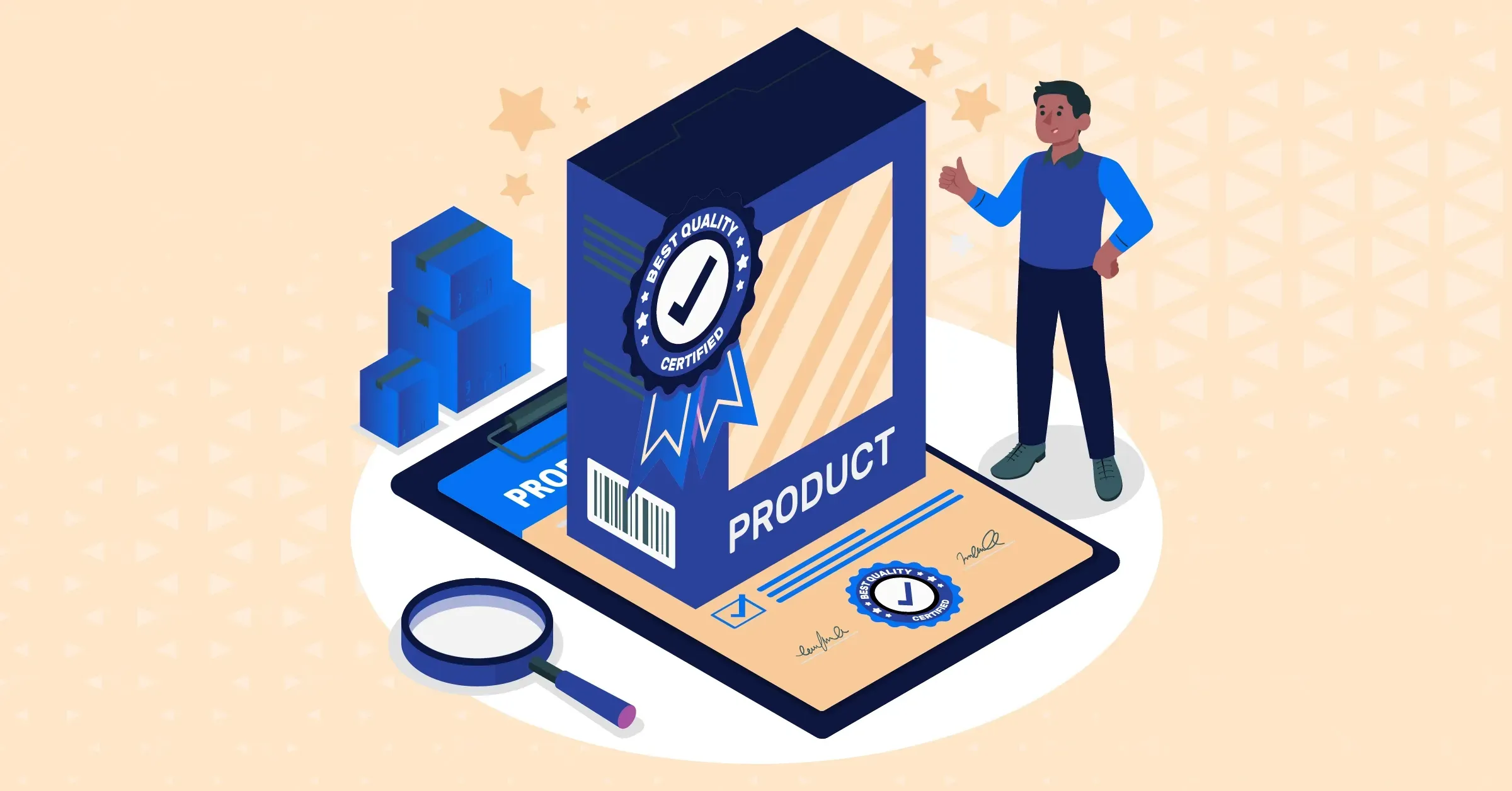
By focusing on providing detailed and transparent product descriptions, high-resolution images, and ensuring product quality, Shopify store owners can significantly enhance the customer experience and drive higher conversion rates. These efforts not only improve the immediate likelihood of purchase but also contribute to long-term customer satisfaction and loyalty, ultimately leading to sustained growth and profitability. The attention to detail in product presentation and quality assurance is a key factor in optimizing the Shopify conversion rate and achieving business success.
Checkout process
The checkout process is a critical factor that directly impacts the Shopify conversion rate. As store owners, it is essential to make the checkout process as effortless and smooth as possible. By reducing customer friction during payment processing, you can significantly boost your chances of securing a sale. An optimized checkout process not only enhances the customer experience but also contributes to higher Shopify conversion rates and increased revenue.
One of the primary ways to streamline the checkout process is by ensuring that customers have access to secure and speedy payment options. Offering a variety of payment methods, such as Apple Pay, PayPal, credit cards, and other popular digital wallets, caters to different customer preferences and makes the payment process more convenient. When customers can choose their preferred payment method, they are more likely to complete their purchase, thereby improving the Shopify conversion rate.
Security is another crucial aspect of the checkout process that influences the Shopify conversion rate. Customers need to feel confident that their personal and financial information is protected when making a purchase. Implementing robust security measures, such as SSL certificates and secure payment gateways, reassures customers that their data is safe. Highlighting these security features on your checkout page can further instill trust and encourage customers to finalize their transactions.
Speed is equally important in the checkout process. A lengthy or complicated checkout can lead to cart abandonment and a lower Shopify conversion rate. Simplifying the checkout process by minimizing the number of steps, enabling guest checkouts, and pre-filling forms for returning customers can significantly enhance the user experience. Additionally, ensuring that the checkout page loads quickly and is optimized for mobile devices is vital, as a substantial portion of online shopping occurs on mobile platforms.
Furthermore, clear and transparent communication throughout the checkout process can improve the Shopify conversion rate. Providing a summary of the order, including item details, shipping costs, and total price, helps customers feel informed and in control of their purchase. Offering real-time support through live chat or customer service can also address any last-minute questions or concerns, reducing the likelihood of cart abandonment.
In summary, optimizing the checkout process is essential for enhancing the Shopify conversion rate. By offering secure and speedy payment options, ensuring robust security measures, simplifying the checkout steps, and providing clear communication, store owners can create a seamless and enjoyable shopping experience. These efforts not only reduce friction and encourage customers to complete their purchases but also contribute to higher conversion rates and long-term business success. In the competitive eCommerce landscape, a smooth and efficient checkout process is key to driving sales and achieving sustainable growth.
Customer reviews
By leveraging the power of customer reviews, you can quickly establish trust and credibility with potential customers, which is crucial for improving the Shopify conversion rate. Customer reviews act as social proof, providing real-world evidence that your products and services meet or exceed expectations. When potential buyers see positive feedback from other customers, they are more likely to trust your brand and feel confident in making a purchase. This trust and confidence can lead to improved Shopify store conversion rates, ultimately increasing your overall sales and fostering long-term customer loyalty.
As a Shopify store owner, it is essential to encourage your customers to leave reviews that showcase their positive experiences. Actively seeking out and displaying customer feedback serves as an invaluable asset for your business. Positive reviews highlight the quality and reliability of your products, helping to reassure hesitant buyers and reduce the perceived risk of purchasing. By prominently featuring these testimonials on product pages, landing pages, and even in marketing materials, you can enhance the credibility of your store and significantly boost the Shopify conversion rate.

Furthermore, engaging with customer reviews, both positive and negative, demonstrates your commitment to customer satisfaction and continuous improvement. Responding to reviews shows that you value customer feedback and are willing to address any issues that arise. This proactive approach not only helps in resolving potential problems but also fosters a sense of community and trust between you and your customers. By maintaining an open line of communication and demonstrating that you care about your customers’ experiences, you can further enhance the Shopify conversion rate, ensuring that your store remains competitive and successful in the ever-evolving eCommerce landscape.
Promotions and discounts
Offering promotions and discounts is a powerful strategy to persuade hesitant customers into purchasing your products, which can significantly improve the Shopify conversion rate. Discounts create a sense of urgency and excitement, encouraging customers to take advantage of the deal before it expires. This sense of urgency can reduce the time customers spend deliberating over a purchase, increasing the likelihood of a conversion. Whether it’s a limited-time offer, a seasonal sale, or a special discount for first-time buyers, promotions can effectively drive traffic to your store and boost the Shopify conversion rate.
For Shopify store owners, implementing a variety of promotional deals can lead to substantial gains. Flash sales, bundle discounts, free shipping, and buy-one-get-one-free offers are just a few examples of how promotions can be structured to appeal to different customer segments. By analyzing your target audience and understanding what types of promotions resonate best with them, you can tailor your discount strategies to maximize impact. Additionally, highlighting these deals prominently on your website and through marketing channels such as email campaigns and social media can further enhance their effectiveness. The more visible and enticing the promotion, the greater the potential for an increased Shopify conversion rate.
Moreover, promotions and discounts not only attract new customers but also incentivize repeat purchases from existing customers. By offering exclusive deals to loyal customers or members of a rewards program, you can foster a sense of appreciation and strengthen customer relationships. This approach not only boosts the Shopify conversion rate by encouraging immediate sales but also enhances customer retention and lifetime value. In summary, integrating well-planned promotions and discounts into your sales strategy is a highly effective way to drive conversions, increase sales, and achieve long-term business growth on the Shopify platform.
Customer service
Providing excellent customer service is essential to building trust with customers and can result in more repeat purchases, as well as a higher Shopify conversion rate. Exceptional customer service enhances the overall shopping experience, addressing any issues or questions promptly and effectively. When customers feel valued and supported, they are more likely to complete their purchases and return for future transactions. By prioritizing customer service, Shopify store owners can significantly improve their Shopify conversion rate and foster long-term customer loyalty.
To achieve this, Shopify store owners must empower their team with the knowledge and tools required to offer responsive and helpful assistance. Training staff to handle inquiries efficiently, whether through live chat, email, or phone support, ensures that customers receive timely and accurate information. Providing comprehensive FAQs, detailed product information, and easy access to support can also reduce friction points and enhance the Shopify conversion rate. By resolving customer concerns swiftly and satisfactorily, you build a positive reputation and encourage more conversions.

Moreover, proactive customer service strategies, such as reaching out to customers post-purchase to ensure satisfaction or offering personalized recommendations based on previous purchases, can further boost the Shopify conversion rate. Implementing a system for gathering and acting on customer feedback demonstrates a commitment to continuous improvement and customer care. This approach not only addresses immediate needs but also helps in identifying trends and areas for enhancement, contributing to a better overall shopping experience. In summary, investing in excellent customer service is a key driver of higher Shopify conversion rates, increased customer satisfaction, and long-term business success.
Pricing
When it comes to optimizing the Shopify conversion rate, pricing plays a crucial role. The price tag of your products can significantly influence a customer’s decision to make a purchase. If prices are perceived as unreasonably high, potential customers may abandon their carts and seek more affordable alternatives elsewhere. On the other hand, prices that are too low may raise doubts about the quality of the products or the credibility of the store. Therefore, selecting an optimal pricing strategy is essential for any successful business owner utilizing Shopify.
An effective pricing strategy involves finding a balance that reflects the value of your products while remaining competitive in the market. Conducting market research to understand the pricing of similar products and assessing your target audience’s willingness to pay can provide valuable insights. By aligning your prices with customer expectations and market standards, you can enhance the Shopify conversion rate. Additionally, transparent pricing, including clear information on shipping costs and taxes, can build trust and reduce cart abandonment.
Dynamic pricing strategies, such as offering discounts, bundle deals, and seasonal promotions, can also positively impact the Shopify conversion rate. These tactics create a sense of urgency and provide an incentive for customers to complete their purchases. For instance, limited-time discounts can encourage hesitant buyers to act quickly, while bundle deals can increase the perceived value of the purchase. By leveraging these pricing strategies, Shopify store owners can attract more customers, boost sales, and ultimately improve the Shopify conversion rate. In summary, careful consideration of pricing strategies is vital for maximizing conversions and achieving long-term success on the Shopify platform.
Target audience
Unlocking the key to your target audience’s needs and preferences is a critical element in optimizing any Shopify store. Understanding your demographic thoroughly allows you to tailor your products and marketing strategies to align with their desires, significantly impacting the Shopify conversion rate. By conducting a detailed analysis of your target audience, you can create products and experiences that resonate deeply with potential customers, leading to an increase in the average conversion rate for Shopify stores.
One effective approach is to gather data on your target audience’s behaviors, preferences, and pain points. This information can be obtained through various means, such as customer surveys, social media interactions, and website analytics. Armed with this knowledge, Shopify store owners can design and offer products that are specifically geared toward what customers want and need. This targeted approach not only enhances customer satisfaction but also improves the conversion rate for Shopify stores. When your products meet the exact needs of your audience, you can expect a noticeable increase in your Shopify store conversion rate.
Additionally, understanding your target audience helps in crafting personalized marketing messages and promotions. By addressing the specific interests and preferences of your audience, you can create compelling content that drives engagement and conversions. For example, if your analysis reveals that your audience values eco-friendly products, highlighting these aspects in your marketing campaigns can boost the online store conversion rate Shopify metrics. Tailoring your messaging to resonate with your audience’s values and needs ensures that your Shopify online store conversion rate sees a significant improvement.
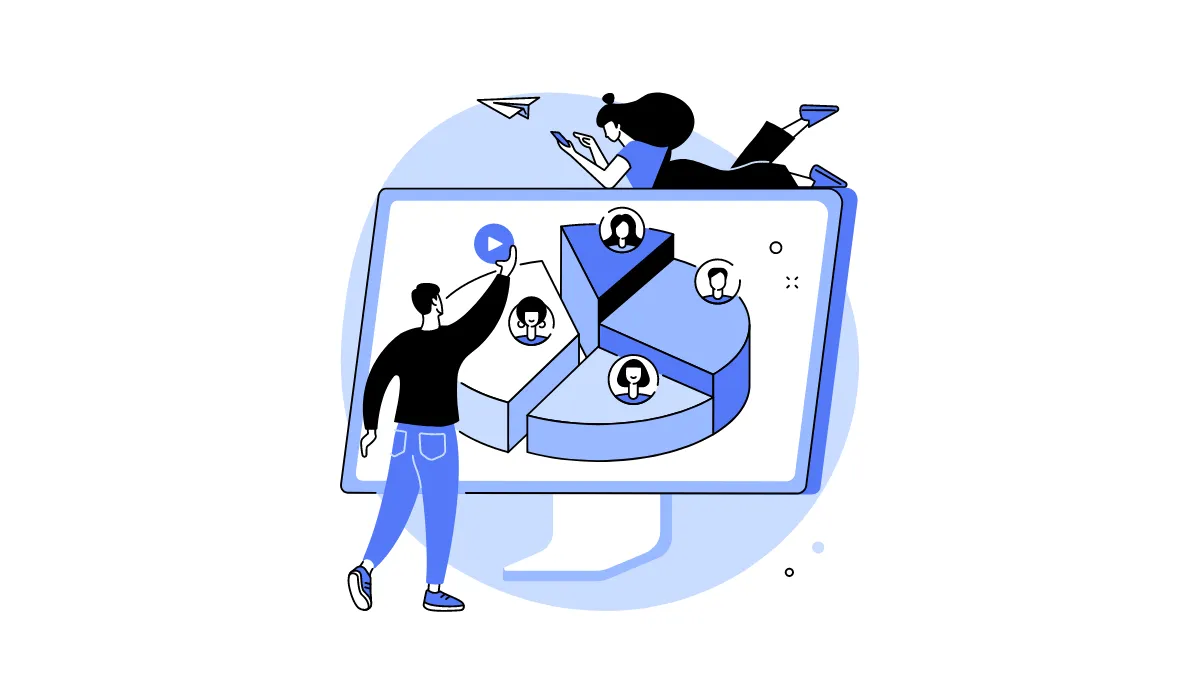
In summary, a thorough understanding of your target audience is essential for optimizing the Shopify conversion rate. By crafting products and marketing strategies that align with the desires of your demographic, Shopify store owners can create a more satisfying shopping experience, leading to higher conversion rates and long-term success.
User experience
Enhancing the user experience is crucial for securing conversions from your Shopify store. A seamless and intuitive interface, combined with lightning-quick loading speeds, can make all the difference in improving the Shopify conversion rate. When customers encounter a fast, easy-to-navigate website, they are more likely to stay, explore, and ultimately make a purchase. Conversely, slow loading times and a cumbersome interface can frustrate users, leading to higher bounce rates and a lower conversion rate for your Shopify store.
Optimizing website performance is essential for achieving higher conversion rates on your eCommerce platform. Research shows that even a one-second delay in page loading can significantly impact the online store conversion rate Shopify metrics. Therefore, it is imperative to ensure that your Shopify store loads quickly and efficiently across all devices. This involves optimizing images, leveraging browser caching, and using a content delivery network (CDN) to reduce load times. By doing so, you can enhance the overall user experience and improve the average conversion rate for Shopify stores.
Moreover, a stress-free interface plays a pivotal role in boosting the Shopify online store conversion rate. A well-designed website with intuitive navigation, clear calls-to-action (CTAs), and an easy checkout process can significantly enhance the user experience. Ensure that your website is mobile-responsive, as a growing number of customers shop on their mobile devices. Simplifying the purchasing process by minimizing the number of steps required to complete a transaction can also positively impact the Shopify store conversion rate. By focusing on these user experience elements, you can create a more enjoyable shopping environment that encourages customers to complete their purchases, thereby increasing the average Shopify store conversion rate.
In summary, enhancing the user experience through quick loading speeds and a stress-free interface is key to improving the Shopify conversion rate. By optimizing website performance and ensuring an intuitive, mobile-friendly design, Shopify store owners can significantly boost their conversion rates and achieve greater success in the competitive eCommerce landscape.
Marketing and advertising
Unleashing the power of effective marketing and advertising can significantly attract people to your shop, thus heightening the chances of making a sale and improving the Shopify conversion rate. Shopify store owners should focus on selecting multiple channels for promotion, such as Search Engine Optimization (SEO), paid search, social media campaigns, and email marketing. Each of these channels plays a crucial role in driving targeted traffic to your store, which can enhance the average conversion rate for Shopify stores. By leveraging a diverse range of marketing strategies, you can reach a broader audience and increase the likelihood of conversions.
SEO is a vital tool for boosting the Shopify online store conversion rate by ensuring that your products appear in relevant search results. Optimizing your website content with targeted keywords, improving site structure, and building quality backlinks can drive organic traffic to your store. Paid search and social media campaigns, on the other hand, allow you to target specific demographics and interests, increasing the chances of attracting customers who are more likely to convert. Effective email marketing campaigns can also nurture leads and encourage repeat purchases, further enhancing the conversion rate for your Shopify store.

It’s important to note that these marketing and advertising factors can interact with each other and have a combined effect on conversion rates. For instance, a well-executed social media campaign can drive traffic to your site, while a strong SEO strategy ensures that visitors find your store through organic searches. By continually analyzing and optimizing each channel, you can improve your Shopify store conversion rate. Regularly reviewing metrics and performance data allows you to identify which strategies are most effective and make informed adjustments. This iterative process of optimization not only boosts the online store conversion rate Shopify metrics but also leads to increased revenue and long-term business growth. By strategically implementing and refining your marketing and advertising efforts, you can maximize the impact on your average Shopify store conversion rate and drive sustained success for your eCommerce business.
How to improve Shopify conversion rate?
Improving your Shopify conversion rate is essential for maximizing sales and achieving long-term business success. By focusing on key areas such as web design, product quality, pricing, the checkout process, customer reviews, discount programs, and customer service, you can create a more compelling shopping experience that encourages visitors to make a purchase.
Improve Web Designs
Shopify store owners should focus on several key areas in order to improve their Shopify conversion rate. The first thing Shopify merchants should do is to make sure the website is easy to navigate and visually appealing, as this can have a direct impact on conversion rate and revenue.
Intuitive navigation is essential for helping visitors find what they are looking for quickly and easily. When customers can navigate your site without confusion, they are more likely to explore your products and complete a purchase. Key elements of intuitive navigation include:
- Clear Menu Structure: Organize your product categories in a logical and easy-to-understand manner. Use clear labels and avoid overcrowding the menu with too many options.
- Search Functionality: Implement a robust search feature that allows customers to find products quickly. Include filters and sorting options to refine search results.
- Breadcrumbs: Use breadcrumb navigation to help users understand their location within the site and easily backtrack if needed.
Did you know that almost everyone on the planet now has a smartphone and that 80% of shoppers use their mobile phones while in a physical store to check reviews, compare prices, or find alternative store locations? Now, just think about the impact this has when they are shopping online. Furthermore, 6 out of 10 shoppers consider the ability to shop through their mobile devices as a crucial factor in their brand selection. Therefore, you also need to have a mobile-optimized eCommerce platform that is responsive and will significantly enhance the shopping experience for customers, increasing the chances of them making a purchase. Some of the things you can do include:
- Flexible Layouts: Use flexible grid layouts that adjust to different screen sizes.
- Touch-Friendly Elements: Ensure buttons and links are easily tappable on mobile devices.
- Test Across Devices: Regularly test your site on various devices and browsers to ensure compatibility and a smooth user experience.
Having a website that provides a positive user experience is key. Shopkeepers must ensure their website is optimized for both speed and usability if they want to manage better conversions on their Shopify platform, no one likes slow-loading pages. To ensure your site loads quickly:
- Optimize Images: Compress images without sacrificing quality to reduce load times.
- Use a Content Delivery Network (CDN): Distribute your content across multiple servers to ensure faster delivery to users worldwide.
- Minimize HTTP Requests: Reduce the number of elements on your pages, such as scripts, images, and CSS files, to speed up loading times.
You can also improve customer experiences by using high-quality images and an easy-to-see interface. High-quality images are vital for creating a visually appealing website that engages customers. A simplified site layout enhances the user experience by reducing clutter and making it easier for visitors to focus on your products. Here are some ways to create a clean, well-organized layout that lead to higher engagement and a better Shopify conversion rate:
- High Resolution: Ensure all product images are high-resolution to showcase the details and quality of your products.
- Multiple Angles: Provide images of products from multiple angles and include zoom functionality to give customers a comprehensive view.
- Consistent Style: Maintain a consistent style for all product images to create a cohesive look across your site.
- Whitespace: Use whitespace effectively to separate different elements and avoid overwhelming visitors with too much information at once.
- Consistent Design: Maintain a consistent design throughout your site, including fonts, colors, and button styles, to create a cohesive and professional look.
- Call-to-Action (CTA) Buttons: Use clear and compelling CTA buttons to guide visitors toward desired actions, such as adding products to their cart or proceeding to checkout.
In summary, improving web designs by ensuring intuitive navigation, fast loading times, high-quality images, a mobile-responsive design, and a simplified site layout can significantly enhance the Shopify conversion rate. By creating a user-friendly and visually appealing website, Shopify store owners can attract more visitors, keep them engaged, and increase the likelihood of conversions. This focus on web design is a crucial step in optimizing the overall shopping experience and achieving long-term business success.
Improve Product Quality, Descriptions and Set Reasonable Prices
Improving product quality, crafting detailed descriptions, and setting reasonable prices are crucial strategies for enhancing the Shopify conversion rate. Customers need to feel confident in their purchases, and providing them with high-quality products and comprehensive information can significantly boost their trust and likelihood of converting.
Ensuring high product quality is fundamental for building a loyal customer base and maintaining a positive reputation. High-quality products not only satisfy customers but also encourage repeat purchases and word-of-mouth referrals. Here’s how to focus on product quality:
- Stringent Quality Control: Implement robust quality control measures to ensure that every product meets high standards before it reaches the customer. This can include regular inspections and testing.
- Supplier Reliability: Work with reliable suppliers who can consistently deliver products that meet your quality expectations.
- Customer Feedback: Regularly gather and analyze customer feedback to identify any quality issues and make necessary improvements.
By prioritizing product quality, Shopify store owners can create a positive shopping experience that fosters customer loyalty and enhances the Shopify conversion rate.
Customers want to know exactly what they’re buying, so taking the time to create detailed product descriptions is essential. Comprehensive and transparent descriptions provide customers with the information they need to make informed decisions, which can significantly increase conversion rates. Key elements of effective product descriptions include:
- Clear and Concise Information: Provide clear, concise, and accurate information about the product’s features, specifications, and benefits. Avoid jargon and focus on what matters most to the customer.
- High-Resolution Images: Use high-quality images that showcase the product from multiple angles. Include zoom functionality to allow customers to examine details closely.
- Videos and Demonstrations: Incorporate videos or demonstrations if possible, to show the product in use and highlight its key features and benefits.
- Customer Reviews: Display customer reviews and ratings prominently to provide social proof and build trust.
Regularly updating product information to maintain accuracy is also crucial. Outdated or incorrect information can lead to customer dissatisfaction and returns, negatively impacting the Shopify conversion rate.
Getting the pricing right is an important factor when it comes to improving the Shopify conversion rate. Pricing products too high or too low can scare away potential buyers, so it’s important for shopkeepers to find the optimal price point that reflects the value of their products while remaining competitive. Strategies for setting reasonable prices include:
- Market Research: Conduct thorough market research to understand the pricing landscape within your industry. Analyze competitors’ pricing strategies and identify where your products fit within the market.
- Cost Analysis: Consider all costs involved in producing and delivering the product, including materials, labor, shipping, and overheads. Ensure that your pricing covers these costs while providing a reasonable profit margin.
- Customer Perception: Understand your target audience’s willingness to pay and perceived value of the product. Pricing should align with customer expectations and the perceived quality of the product.
- Dynamic Pricing: Implement dynamic pricing strategies such as discounts, bundles, and seasonal promotions to attract different customer segments and increase sales.
By setting competitive and fair pricing, Shopify store owners can attract and retain customers, thereby improving the Shopify conversion rate.
Understanding and analyzing the target audience is also crucial for optimizing the Shopify conversion rate. By tailoring products to meet the specific needs and preferences of your audience, you can create a more personalized shopping experience that resonates with customers. Steps to achieve this include:
- Customer Research: Conduct surveys, focus groups, and analyze purchasing data to gain insights into your target audience’s preferences, pain points, and buying behavior.
- Product Customization: Develop and offer products that cater specifically to the identified needs and desires of your target audience. This can involve customization options, exclusive product lines, or limited editions.
In conclusion, improving product quality, crafting detailed descriptions, and setting reasonable prices are essential strategies for enhancing the Shopify conversion rate. By focusing on these areas and tailoring products to meet the specific needs of your target audience, Shopify store owners can create a compelling shopping experience that drives higher conversions and long-term business success.
Optimize Checkout Process
The checkout process should also be as simple and streamlined as possible. A simplified checkout process is essential for enhancing the user experience and boosting the Shopify conversion rate. Complicated or lengthy checkout procedures can frustrate customers, leading them to abandon their carts. To simplify the checkout process:
- Minimize Steps: Reduce the number of steps required to complete a purchase. Ideally, the entire checkout process should fit onto a single page or be limited to a few straightforward steps.
- Enable Guest Checkout: Allow customers to complete their purchase without creating an account. Guest checkout options eliminate barriers and speed up the process, appealing to first-time buyers and those who prefer a quick transaction.
- Auto-Fill Information: Use auto-fill features to populate billing and shipping information for returning customers, saving them time and effort.
Shopify store owners should ensure that their checkout process is fast and secure and that customers have access to payment options such as Apple Pay, Google Pay, Microsoft Pay, PayPal, or other payment gateways such as Stripe, Paya, Opayo… Providing a variety of secure payment options is crucial for catering to different customer preferences and increasing the Shopify conversion rate. Customers appreciate having choices and feeling secure when making online transactions.
- Popular Payment Methods: Offer widely-used payment options such as Apple Pay, Google Pay, Microsoft Pay, and PayPal. These options are familiar to many customers and are often preferred for their convenience and security.
- Payment Gateways: Integrate multiple payment gateways like Stripe, Paya, and Opayo to handle various payment methods, including credit and debit cards.
- Security Measures: Highlight the security features of your checkout process, such as SSL encryption and secure payment gateways, to reassure customers that their personal and financial information is protected.
Additionally, Shopify merchants should always provide clear and concise information about security, privacy, and shipping policies, and offer a money-back guarantee or return policy. Don’t forget to make sure the checkout process is optimized for mobile devices, as more and more customers are using their phones to make purchases.
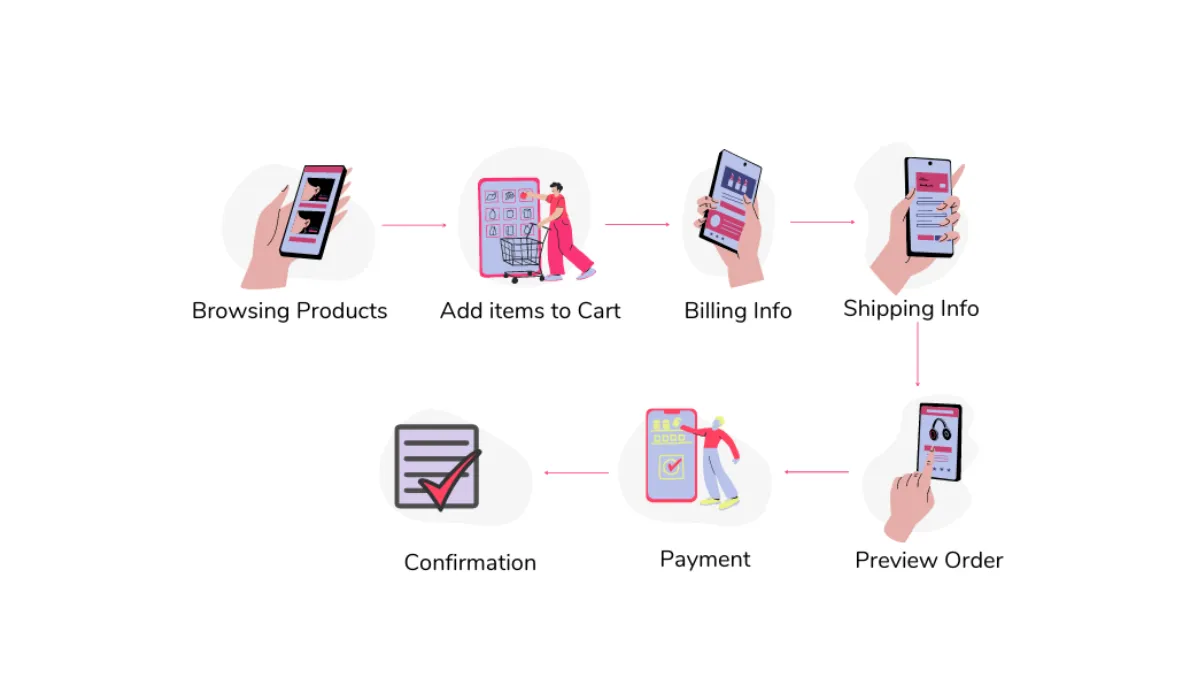
In conclusion, optimizing the checkout process is essential for improving the Shopify conversion rate. By simplifying the checkout steps, offering multiple secure payment options, providing clear instructions, optimizing for mobile devices, and being transparent about policies, Shopify store owners can create a seamless and reassuring checkout experience. These efforts not only reduce cart abandonment but also build trust and encourage customers to complete their purchases, leading to higher conversion rates and long-term business success.
Utilize Customer Reviews and Discount Programs
Customer reviews are an effective way of increasing trust and credibility with potential customers, which can significantly enhance the Shopify conversion rate. Positive reviews act as social proof, demonstrating that others have had satisfactory experiences with your products. This reassurance can alleviate potential buyers’ concerns and encourage them to make a purchase. Shopify store owners should actively encourage customers to leave reviews by sending follow-up emails post-purchase, offering incentives for reviews, and making the review process as simple as possible. Displaying these reviews prominently on product pages can further boost conversion rates by providing potential customers with the information they need to make confident purchasing decisions.
Similarly, offering discounts or promotions is another powerful strategy for encouraging visitors to make a purchase from your store. Discount programs can create a sense of urgency and provide the extra push needed for hesitant shoppers to complete their transactions. Implementing limited-time offers, flash sales, or exclusive discount codes can drive immediate sales and improve the Shopify conversion rate. By highlighting these promotions on your homepage, product pages, and through marketing channels such as email campaigns and social media, you can attract more customers and incentivize them to act quickly. Additionally, offering discounts to first-time buyers or loyalty rewards for repeat customers can help in building a loyal customer base and increasing long-term sales.
All in all, utilizing customer reviews and discount programs are essential strategies for maximizing the Shopify conversion rate. Encouraging and displaying customer reviews can build trust and credibility, making potential customers more likely to make a purchase. Offering well-timed discounts and promotions can create a sense of urgency, driving immediate sales and attracting both new and returning customers. By integrating these tactics into their overall marketing strategy, Shopify store owners can enhance customer engagement, boost conversion rates, and achieve sustained business growth.
Customer Service Quality
Good customer service is essential for building trust with potential customers and increasing customer satisfaction, which in turn leads to higher Shopify conversion rates. When customers feel valued and supported, they are more likely to complete their purchases and return for future transactions. Shopify store owners should ensure that their customer service team is responsive and helpful in order to provide a positive experience for their customers. Training staff to handle inquiries efficiently, whether through live chat, email, or phone support, is crucial. Providing comprehensive FAQs and detailed product information can also reduce friction points and enhance the overall customer experience.
By focusing on these areas, Shopify store owners can improve their Shopify conversion rate significantly over time. This involves consistently analyzing data from analytics tools such as Google Analytics and performing A/B tests for changes made on the website or within marketing campaigns. Regularly reviewing metrics and customer feedback allows store owners to identify pain points and areas for improvement, ensuring that every interaction is optimized for conversion. Additionally, staying up-to-date with industry trends, such as new payment methods or changes in customer preferences, is essential for remaining competitive. This means considering every aspect of the customer journey and ensuring that each step is optimized to meet evolving customer needs and expectations.
Moreover, offering multiple channels for customer support, such as live chat and email, ensures that customers can reach out in their preferred way, enhancing their experience and increasing the likelihood of a sale. Implementing a comprehensive FAQ section to address common queries can also streamline the support process and provide customers with quick answers, further boosting the Shopify conversion rate. By prioritizing customer service quality and continuously refining their approach based on data and customer feedback, Shopify store owners can foster long-term loyalty, improve conversion rates, and achieve sustained business success.
Leverage Data Analytics
Leveraging data analytics is a powerful strategy for improving the Shopify conversion rate. By utilizing analytics tools such as Google Analytics, Shopify store owners can track and analyze customer behavior to gain valuable insights into how visitors interact with their site. These insights can reveal patterns and trends that help identify areas where the customer experience can be enhanced. For instance, analytics can show which product pages have high bounce rates, indicating potential issues with product descriptions, images, or prices that need to be addressed. By understanding these behaviors, store owners can make informed decisions about where to focus their optimization efforts.
Identifying and addressing bottlenecks in the conversion funnel is another critical application of data analytics. The conversion funnel represents the journey customers take from landing on the site to completing a purchase. By analyzing data at each stage of the funnel, store owners can pinpoint where customers are dropping off and why. For example, if a significant number of customers abandon their carts during checkout, this could indicate issues such as complicated forms, limited payment options, or lack of trust signals. By addressing these bottlenecks through targeted improvements, such as simplifying the checkout process or adding more secure payment gateways, Shopify store owners can increase the likelihood of conversions.
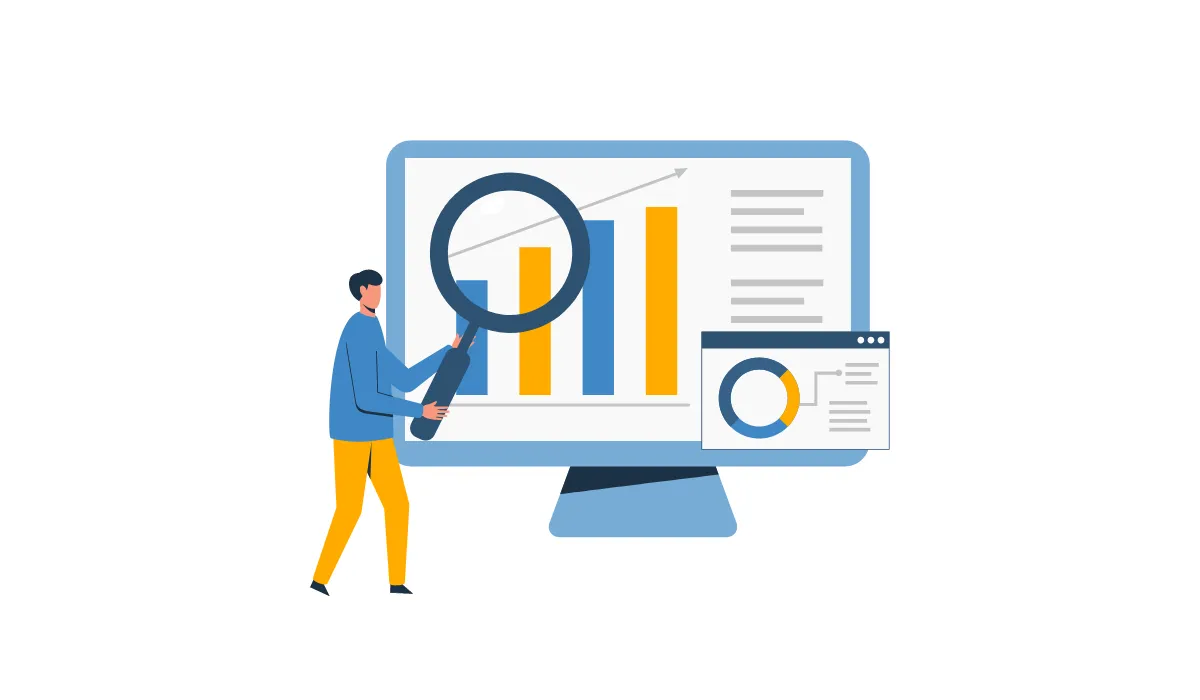
Continuous testing and optimization based on data insights are essential for maximizing the Shopify conversion rate. A/B testing, for instance, allows store owners to compare different versions of a webpage or marketing campaign to see which performs better. This iterative process helps in fine-tuning various elements, such as headlines, images, calls-to-action, and pricing strategies, to determine what resonates most with customers. Regularly updating and refining these elements based on analytical data ensures that the store remains responsive to customer needs and market trends. By consistently leveraging data analytics to guide decision-making and optimization efforts, Shopify store owners can achieve sustained improvements in their conversion rates and overall business performance.
Implement Personalized Marketing Strategies
Implementing personalized marketing strategies is essential for enhancing the Shopify conversion rate. By using customer data to create tailored marketing campaigns, Shopify store owners can significantly improve engagement and drive conversions. Personalized marketing involves leveraging insights from customer behavior, preferences, and past interactions to deliver targeted messages that resonate with individual shoppers. This approach makes customers feel valued and understood, increasing their likelihood of making a purchase.
One effective method of personalized marketing is through product recommendations based on browsing and purchase history. When customers visit your store, they leave behind valuable data about their interests and preferences. By analyzing this data, you can suggest products that are highly relevant to each customer. For example, if a customer frequently browses or purchases skincare products, you can highlight new or complementary skincare items. These personalized recommendations can be displayed on product pages, in shopping carts, or through follow-up emails, making the shopping experience more relevant and convenient, thereby boosting the Shopify conversion rate.
Tailoring email marketing and social media ads to individual customer preferences is another powerful way to implement personalized marketing strategies. By segmenting your email list based on customer data, you can send targeted emails that feature products and promotions tailored to specific segments. Personalized email content, such as addressing customers by their names and referencing their previous purchases, can significantly increase open and click-through rates. Similarly, using customer data to create personalized social media ads ensures that your advertisements are seen by the right audience, enhancing their effectiveness. These targeted marketing efforts not only improve the customer experience but also drive higher engagement and conversion rates, ultimately leading to increased sales and business growth.
In summary, implementing personalized marketing strategies involves using customer data to create tailored marketing campaigns, making product recommendations based on browsing and purchase history, and personalizing email and social media content to individual preferences. By focusing on these personalized approaches, Shopify store owners can enhance customer satisfaction, drive higher engagement, and significantly improve the Shopify conversion rate.
How to Keep Track of Shopify Conversion Rate
Shopify provides 4 distinct types of conversion rate tracking reports for you to select from, offering a greater range of perspectives and allowing you to monitor which platform your traffic is generated from.
Shopify Reports
Shopify’s integrated Reports dashboard gives you access to accurate data by simply navigating to Admin > Reports. Unlike third-party tracking apps, Shopify’s built-in capabilities guarantee precise information that is consistently updated.
There are 2 types of reports in the dashboard:
- Default report: This report is divided into three distinct sections – Sales, Acquisition, and Behavior – providing you with a preliminary assessment of your Shopify store performance. However, it doesn’t provide much in the way of detail.
- Custom report: You can craft a custom report based on Sales, Payments, Taxes, Visitors, and Customer metrics from your Shopify store to gain deeper insights into the performance of particular sections.
Google Analytics
To track your Shopify conversion rate using this tool, you need to connect your Shopify store to Google Analytics through the Online store dashboard. With Google Analytics, you can track the collective marketing performance across various channels, including Facebook with no capability to audit them.
Based on the needs of your online store, you can select from two levels of Shopify conversion tracking with Google Analytics for optimal performance: Basic eCommerce tracking and Enhanced eCommerce tracking. Both tools provide accurate insights into customer behavior that will enable you to maximize conversions and optimize efficiency.
Conclusion
All in all, the Shopify conversion rate is a crucial metric for evaluating the success of an online store. By focusing on key areas such as website design, product quality, detailed descriptions, and high-quality images, Shopify store owners can significantly enhance the shopping experience and improve their Shopify conversion rate. Streamlining the checkout process and providing multiple secure payment options can further reduce friction and boost conversion rates. Additionally, leveraging customer reviews and offering promotions and discounts can build trust and encourage more purchases.
The average conversion rate for Shopify stores provides a benchmark, but striving to exceed the average Shopify store conversion rate is essential for achieving long-term success. By continuously analyzing and optimizing various aspects of the store, such as marketing strategies and customer service, store owners can drive higher online store conversion rate Shopify metrics. Ensuring excellent customer service and staying responsive to customer needs can also play a significant role in enhancing the Shopify store conversion rate.
Overall, improving the Shopify conversion rate requires a holistic approach that includes constant monitoring and refinement of multiple elements. By implementing the strategies discussed in this blog post, Shopify store owners can create a more compelling and efficient shopping experience that not only meets but exceeds customer expectations. This ongoing commitment to optimization will help increase the Shopify online store conversion rate, leading to higher sales and sustainable business growth.











